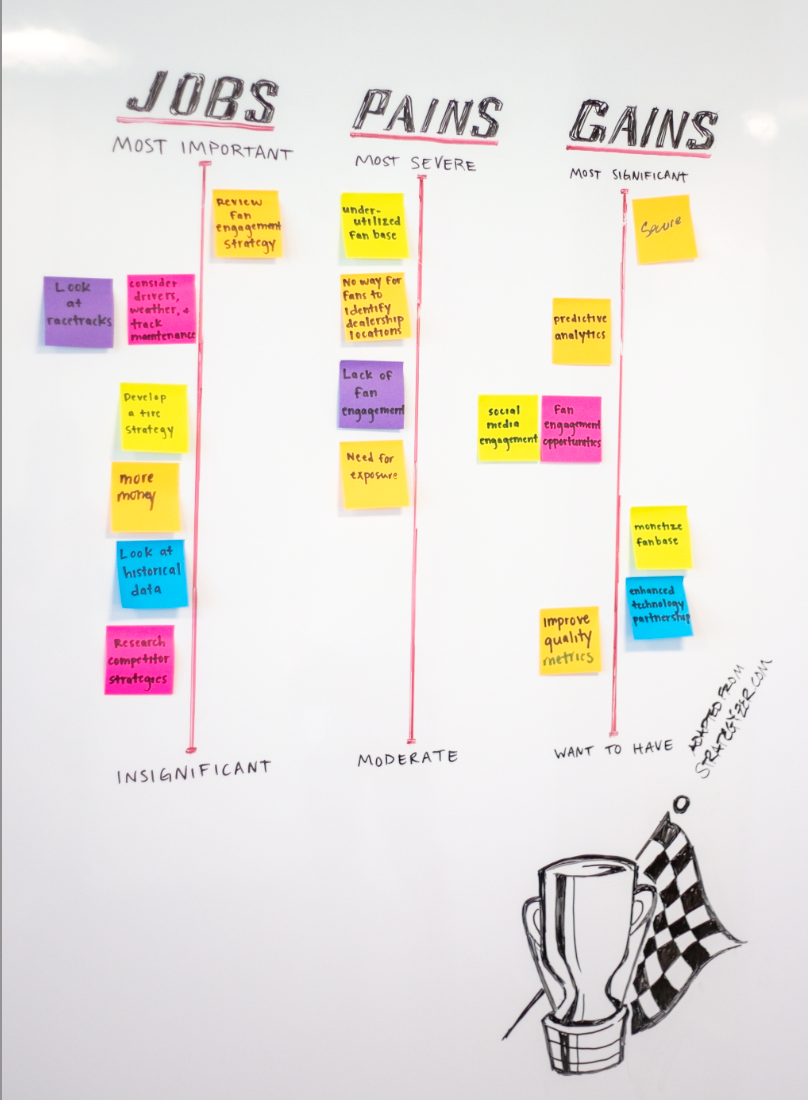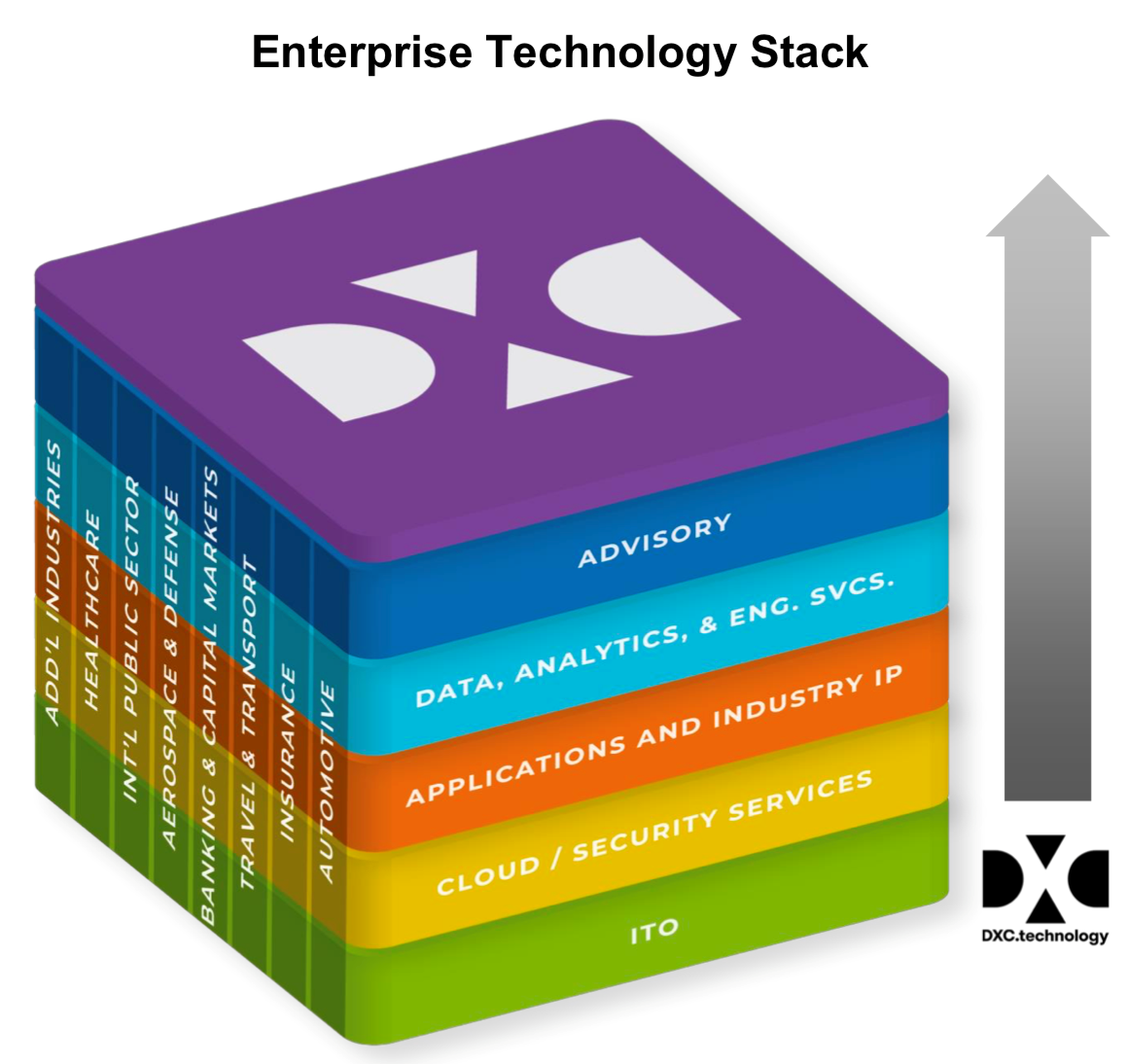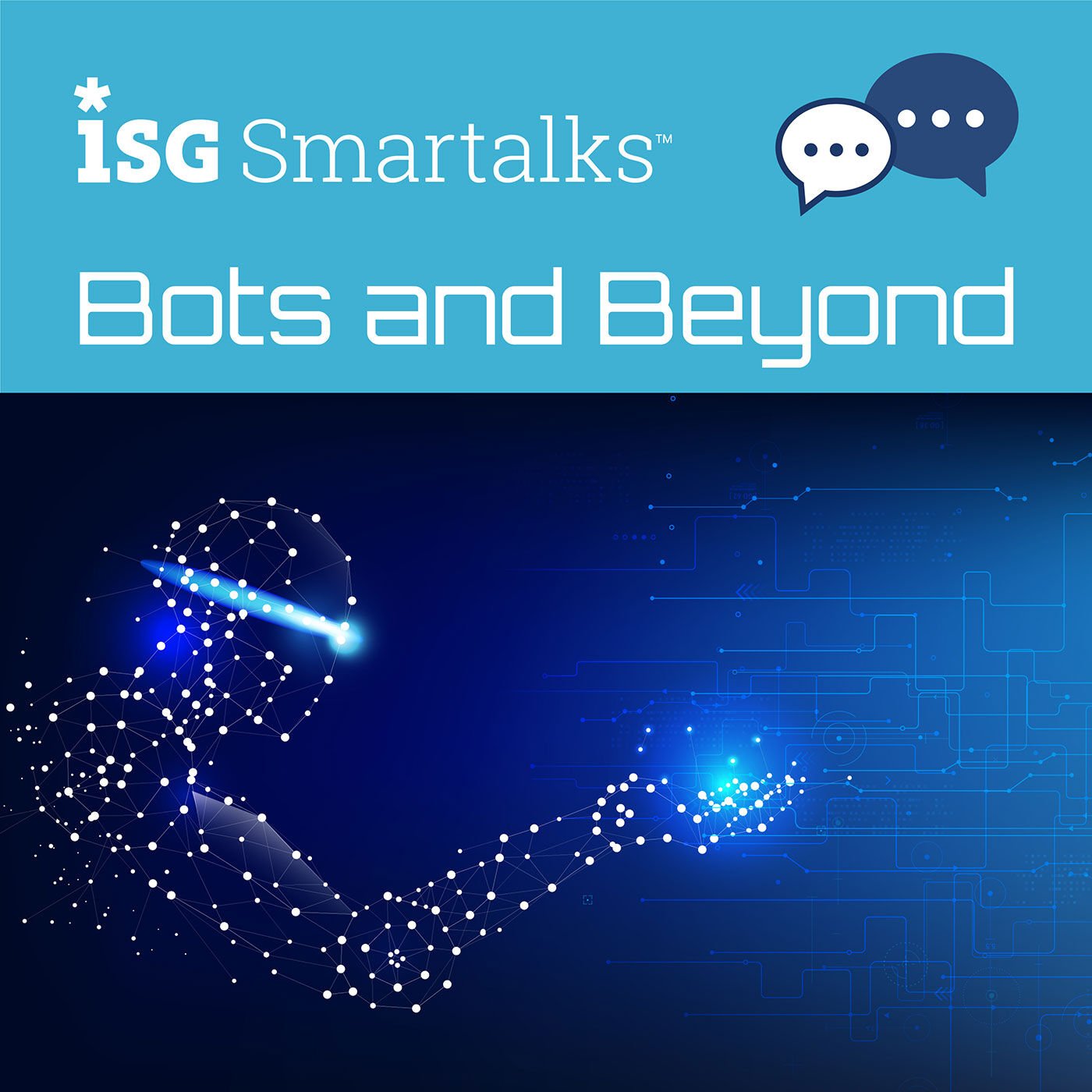First Impressions
This week I toured DXC’s Digital Transformation Center (DTC) in New Orleans to take a look at DXC’s next generation of innovation and development. The DTC spans three floors of brand new, modern office space directly overlooking the iconic Superdome, and – in proper innovation-center fashion – it appears to be made almost entirely out of whiteboards – many of which were covered with diagrams, plans, snippets of code and sketched icons.
Figure 1 – Whiteboarding:

Though the DTC is currently home to 400 employees, it gives the impression of ordered creativity – whiteboards were carefully erased when meetings ended, desks were clean and the general layout spoke of focus unlike many startup offices that tend more toward chaos.
Almost all of the DTC workforce has been hired within the last two years; few employees at the DTC have a long tenure at DXC. Terrell Boynton, the Director and GM of the New Orleans DTC, said this was by design. While DXC has more than 130,000 employees globally, one of the objectives of its only U.S.-based center was to hire locally and build new delivery competency centered around key disruptive technologies. The effect of this cuts both ways. On the one hand, the focus on technology, progress and innovation is strong. On the other, the tour of the DTC showed some small areas where prestige and polish seemed to be missing. As the DTC matures, it will be interesting to see how DXC chooses to integrate this innovation- and delivery-focused approach into its existing clients’ service experience and leverage the DTC as a demo space for prospective clients.
DXC has plans for growth at the DTC. It claims it will open additional floors and bring on another 1,600 new hires over the next four years. Many of those new hires will come from relationships DXC has with local universities and colleges, as well as the department of Louisiana Economic Development. These relationships help ensure that local curriculums are producing students who graduate and are immediately able to fill the digital talent gap, and through the program, the DTC is able to work, with those schools to ensure that their new hires can be productive from day 1. DXC has similar programs in place with all of their DTC locations, each working to ensure a pipeline of well-trained workforce is available continuously to meet the needs to new technology expertise and changing customer requirements.
DTC Program
While the DTC is the only one of its kind for DXC in the U.S., it is one of six for DXC globally. Other locations include Sofia, Bulgaria; Newcastle, UK; and Bangalore, India; Adelaide, Australia; and Manila, Philippines. DXC’s recent acquisition of Luxoft also brought similar centers, called “Smashing Ideas”, one of which is in Seattle, WA, and the other in Kiev, Ukraine. Luxoft’s centers at this point will not be immediately integrated into DXCs DTC program, but they haven’t ruled that out in the long term.
DXC has stated that its DTCs are not all intended to be identical. While the one in the New Orleans is largely net-new talent for the company and a brand-new location, the other centers have different focus areas, with each one informed by its legacy delivery capabilities. The intent is to use DTCs to develop – not just showcase – innovation. As the program matures, we’ll see which capabilities DXC chooses to make common across all its centers and which unique flavors develop at each one.
One DXC
In addition to describing the role of the DTC, DXC was sure to tie the innovation focus to their broader enterprise technology stack. DXC views the changing operational structure of IT, enabled by new technologies, as the key driver for innovation inside their clients’ IT environments. To describe that, they showed what they call the “Enterprise Technology Stack” which describes a layered model from managed infrastructure and operations, up through increasingly differentiated and unique services that a client might pursue. This approach of building unique value propositions from the bottom up is what they believe sets them apart from their competitors. At the bottom levels of the stack, they can leverage their best practices and the learnings they have from operating at scale, but as workloads and requirements become more complex, they have the flexibility to bring in multi-disciplinary teams from the DTC and other delivery centers to ensure that they always leverage the appropriate expertise to solve every client problem.
Figure 2 – Enterprise Technology Stack

To support this stack, DXC has focused on building out their own operating platforms to help their customers take advantage of common deployment patterns in the cloud, to manage large scale hybrid environments, and to secure these increasingly mission critical operations that are spread across multiple infrastructures and environments. DXC does not believe its clients are planning for a full migration to the public cloud for all their workloads for a variety of financial, practical, and regulatory reasons, but is determined that regardless of how a given customer plans on operating, that they can leverage the OneDXC platform to deliver flexible and scalable operational support for those clients. With this model firmly rooted under their innovation efforts at the DTC, it gives them certainty that when the innovation work is done, there is a stable and ready environment to carry it into production.
Demos and Showcases
Over the course of the day, I had the opportunity to meet with several different teams at the DTC and look at some real-world examples of how DXC has used the DTC to solve real-world client problems. I met with teams focused on advanced analytics and data science (including data pipelines and geospatial data), augmented and virtual reality (AR/VR), DevOps and continuous integration (CI/CD), cloud migration, User interface and user experience (UI/UX) design and design thinking. We looked at several interesting use-cases DXC has recently worked on or completed for clients:
- The AR/VR team built a service technician training and walkthrough demonstration that took me through the process of changing an air filter in a clear plastic replica of a motorcycle engine. Using Microsoft’s recently released Microsoft Hololens 2 kit and a custom application that DXC built, I was able to follow along with “on screen” instructions, step by step, that guided me through the disassembly of the intake housing to swap out the filter.
After the demo, the team that built it discussed with me the various requirements to make a project like that successful, from the 3D data assets, which they received from their clients, to the CAD models they built for tools and components, to the instructional checklist that brought the prospective technicians through the process in the right order. While not the first demo of its kind that I’ve seen, the post-demo discussion gave me a lot of confidence in the approach the AR/VR team used to understand the technical processes with the client and to plan for multiple eventualities in a more complicated process.
Finally, the discussion turned to the integrative approach the team was taking with the data. Specifically, we discussed the data DXC had available to ensure the service process was successful, where the team could go next, for example, integrating to an inventory management system to evaluate whether or not the procedure could be completed, before the technician even started, or to check whether specific tools or machinery were present in the workshop.
- A navigation app for people with different physical abilities. This represents a “hard problem” from an engineering point of view and one that requires an interdisciplinary approach to solve. Development of this solution is ongoing, but the team was able to show user interface design, understanding of the relevant regulations, understanding of the needs for navigation aids by those who have different abilities, e.g. visual impairment vs wheelchair access, and maybe most importantly, the gathering and analysis of data to solve these problems.
In this use case, the analytics team was able to show how it is leveraging existing image recognition libraries created for self-driving cars to recognize curbs in photos taken on street level. The team could then apply this to crowdsourcing data on sidewalks, staircases and parks, even where it was not easy to get a classic “street view” car to gather the data.
The UX team demonstrated early preference panes for the users of the app, changing the layout and the types of information the app would display based on the types of obstacles that a given individual most needed to know about and a brief discussion of the design process it had gone through.
- Finally, I met with the DevOps and CI/CD team to discuss a recent cloud migration. The project involved the migration of a web app with over 100 microservices from an on-premises Mesos environment into two different Amazon Web Services (AWS) environments to facilitate a future divestiture. The engineering team brought in a new security approach and a host of market-current technologies in the stack to enable a new environment to scale up and down, maximize cost savings in the cloud and make it easier to govern and manage in the long term.
The demos and teams gave me a great cross-section of DXC’s approach to the work that happens at the DTC. The works phases include:
- Discovery – Become a partner, understand what needs to change and drill into the details of that change. This is the design-thinking approach and the first step in defining requirements for an minimum viable product.
- Design Focus – Bring in multi-skill squads to evaluate and divide the process. Ensure that people with relevant skillsets are working on the right parts of the project and leverage relevant subject matter experts (SMEs) to build prototypes and MVPs.
- Develop – Begin to harden the MVPs. Be concerned with architecture, security and build a product roadmap for additional features and capabilities for the MVP.
- Scale – Take the hardened product and move beyond the small team at the DTC. Involve other delivery centers for long-term support and operations or hand off the project to the client. Engage the managed service capabilities from DXC and the technology on the OneDXC platform for the long term.
The methodology certainly resonates with common practice in the industry and speaks again of the focus DXC has placed on the idea that the DTC will represent market-current technologies and practices.
Key Impressions and Takeaways
The New Orleans DTC is a relatively new endeavor for DXC, and it shows promise as a way to demonstrate the company’s capabilities for both current and prospective clients. DXC has shown commitment to the idea with the build out of a new space, and wholesale hiring of a new workforce. Longer term, the prospects look even better, with relationships in place to build new talent locally, and a plan to focus specifically on emerging technologies and skills relevant to helping DXC’s large clients navigate digital transformation.
That novelty and future-focus does come at the cost of a bit of polish, branding and authority that would be more typical of a site visit, and I expect that especially as client traffic to the DTC leans toward demos and away from pure delivery, we’ll see that develop. In many ways, I hope that DXC chooses to keep the maturation of this center independent from its legacy business to let it come into its own.
Finally, the approach they have laid out with the Enterprise Technology Stack proposes an answer to the age-old question, “How do we move from innovate, to operate?” In their case, they believe that the integration of the OneDXC platform, and the DTC program can ensure that the handoff between new innovation and scalable operations is seamless.



